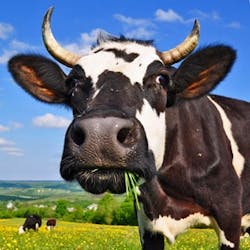2013 Ig Nobels: Modified Onions Mean No More Tears; Unpredictable Cows
Earlier this month the world celebrated the 23rd First Annual Ig Nobel Prize ceremony. The Ig Nobel Prizes are organized by the magazine Annals of Improbable Research. The ceremony is co-sponsored by the Harvard-Radcliffe Society of Physics Students and the Harvard-Radcliffe Science Fiction Association. This year's prizes answer life-long questions that have been keeping scientists, housewives/husbands and cow-tipping teens awake at night. The demand for understanding the behavior of cows and the need for creating an onion that doesn't make us cry is strong. And the pockets to fund this type of research are apparently deep. Wait no longer for your answers, my friends. We now know that "the irritating lachrymatory factor that is released by onions when they are chopped up. . . is specifically synthesized by a previously undiscovered enzyme, lachrymatory-factor synthase."The winners of the chemistry prize deserve our thanks for discovering that the biochemical process by which onions make people cry is even more complicated than scientists previously realized. If you'd like to personally thank them, here are their names: Shinsuke Imai, Nobuaki Tsuge, Muneaki Tomotake, Yoshiaki Nagatome, Toshiyuki Nagata, and Hidehiko Kumgai. These folks put together the paper "Plant Biochemistry: An Onion Enzyme that Makes the Eyes Water." According to the team, it may be possible to develop a non-lachrymatory onion that still retains its characteristic flavor and high nutritional value by downregulating the activity of this synthase enzyme.Now that our tears have been dried, we can move on to another piece of brilliant science. Winning the probability prize, Bert Tolkamp, Marie Haskell, Fritha Langford, David Roberts, and Colin Morgan made two discoveries: First, that the longer a cow has been lying down, the more likely that cow will soon stand up; and Second, that once a cow stands up, you cannot easily predict how soon that cow will lie down again.To get the skinny on the cow behavior, check out their paper: Are Cows More Likely to Lie Down the Longer They Stand?You can see what other big winners went home with coveted Ig Nobels. And who knows, maybe next year I will be writing about you.
Traci Purdum, senior digital editor and lover of improbable research.


